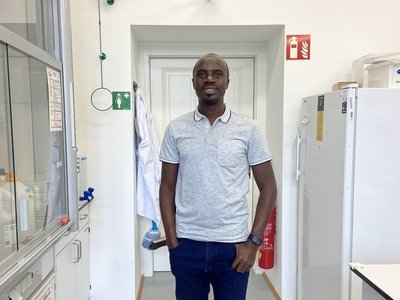

Uganda’s freshwater ecosystems, particularly Lakes Victoria and Kyoga, are increasingly threatened by overfishing and the introduction of invasive fish species. These pressures have significantly contributed to the severe decline of native Oreochromis species, especially Singida tilapia (O. esculentus), which is now primarily confined to satellite lakes in Uganda. In contrast, non-native species such as Nile tilapia (O. niloticus) and blue-spotted tilapia (O. leucostictus) have become dominant. Nile tilapia, in particular, is the leading aquaculture species due to its high productivity and market value. While aquaculture offers clear benefits by boosting fish production and income, it also presents ecological and genetic risks. In Uganda, there are relatively few studies focused on the genetic monitoring and conservation of Oreochromis species. Therefore, understanding the current distribution and genetic status of both native and introduced Oreochromis species is essential for designing effective conservation and aquaculture management strategies. Two recent publications by Gerald Kwikiriza have addressed these issues in detail:
The first publication, “Genetic characterization and interspecies gene flow among the Oreochromis species in the Lake Victoria and Kyoga basins, Uganda: Implications for conservation” , highlights reduced genetic diversity and differentiation across populations. While some satellite lakes still harbour genetically pure stocks of O. esculentus, introgressive hybridization with O. niloticus was detected in Lake Bisina. These findings call for site-specific conservation actions, prioritizing the protection of habitats that still contain genetically intact populations of native species, and limiting further hybridization risks.
The second publication, “Genetic Diversity and Population Differentiation of Farmed Nile Tilapia (Oreochromis niloticus) to Advance Selective Breeding in Uganda”, assessed farmed populations to inform breeding programs. It found that populations from pond systems showed minimal genetic differentiation (FST < 0.001), whereas cage-based populations were more genetically distinct. Among these, farms such as Tendo and Rocks exhibited the highest genetic diversity, identifying them as strong candidates for developing local improved strains. These results provide a basis for reducing inbreeding and strengthening Uganda’s aquaculture sector through structured selective breeding.
Gerald Kwikiriza is a PhD candidate at the Institute for Integrative Nature Conservation Research, BOKU University, Austria, since 2022. His project investigates the ecological and genetic impacts of aquaculture on native tilapia species in Uganda’s lake systems. Before starting his PhD, Gerald served as a research assistant at the Department of Zoology, Entomology & Fisheries Sciences, Makerere University. He holds an International Joint Master's Degree in Limnology and Wetland Management from BOKU University (Austria), Egerton University (Kenya), and IHE Delft Institute for Water Education (Netherlands).
Gerald Kwikiriza, Papius Dias Tibihika, Ivan Abaho, Juliet Kigongo Nattabi, Thapasya Vijayan, Christina Rupprecht, Manuel Curto, Andreas Melcher, Harald Meimberg, Genetic characterization and interspecies gene flow among the Oreochromis species in the Lake Victoria and Kyoga basins, Uganda: Implications for conservation, Journal of Great Lakes Research, Volume 51, Issue 2, 2025, https://doi.org/10.1016/j.jglr.2025.102535
Kwikiriza, Gerald, Ivan Abaho, Papius Dias Tibihika, Andrew A. Izaara, Faith Atukwatse, Timothy Omara, Juliet K. Nattabi, Nasser Kasozi, Manuel Curto, Andreas Melcher, and et al. 2025. "Genetic Diversity and Population Differentiation of Farmed Nile Tilapia (Oreochromis niloticus Linnaeus, 1758) to Advance Selective Breeding in Uganda" Diversity 17, no. 2: 128. https://doi.org/10.3390/d17020128
